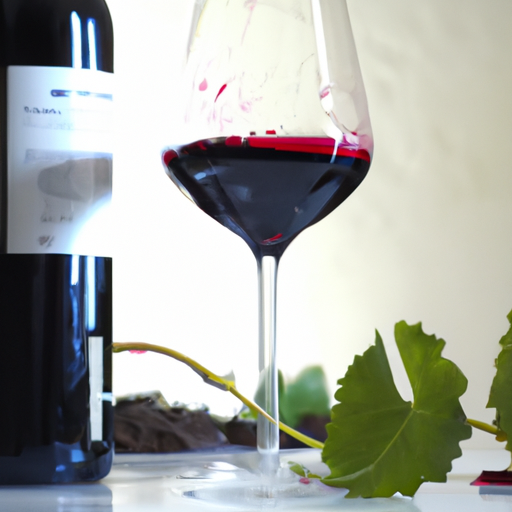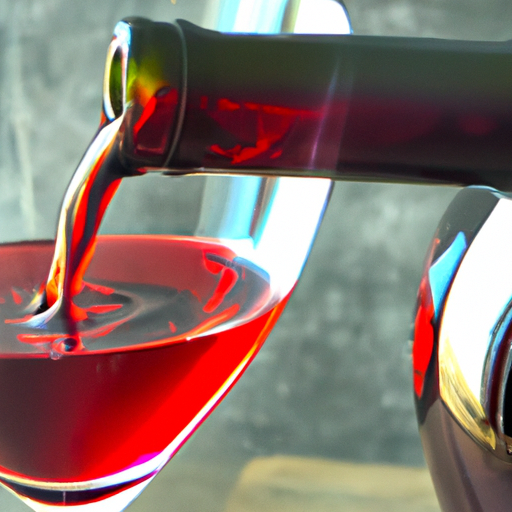
The History and Origins of Wine
Wine, a beverage that has been enjoyed by humans for thousands of years, is often seen as a complex and mysterious drink. From the vast array of grape varieties to the intricate process of winemaking, there is no denying that wine can be a complex subject. However, by delving into the history and origins of wine, we can begin to demystify this complexity and gain a deeper appreciation for this ancient beverage.
The history of wine dates back to ancient times, with evidence of winemaking dating as far back as 6000 BC. The origins of wine can be traced to the region of the Middle East, specifically to the area that is now modern-day Iran and Georgia. It was in these regions that the wild grapevine, Vitis vinifera, was first cultivated and domesticated for winemaking purposes.
The ancient civilizations of Mesopotamia and Egypt played a significant role in the development and spread of winemaking. The Mesopotamians, known for their advanced agricultural practices, were among the first to cultivate vineyards and produce wine on a large scale. They even had a goddess of wine, Ninkasi, who was worshipped for her role in the creation of this divine beverage.
The Egyptians, too, held wine in high regard. Wine was not only consumed for pleasure but also used in religious ceremonies and as a form of currency. The Egyptians were skilled winemakers, using techniques such as grape pressing and fermentation in clay jars to produce their wines. They even had a god of wine, Hapi, who was believed to bring fertility and abundance to the vineyards.
As civilizations expanded and trade routes were established, the knowledge of winemaking spread throughout the Mediterranean region. The Greeks and Romans, in particular, played a crucial role in the development and refinement of winemaking techniques. The Greeks introduced the concept of terroir, the idea that the characteristics of a wine are influenced by the specific climate, soil, and geography of the vineyard. The Romans, on the other hand, focused on improving winemaking practices, such as the use of wooden barrels for aging and the development of vineyard management techniques.
With the fall of the Roman Empire, winemaking knowledge was preserved and further developed by Christian monks. Monasteries became centers of winemaking, with monks meticulously tending to vineyards and perfecting winemaking techniques. It was during this time that the concept of appellations, or designated wine-growing regions, began to emerge.
Today, wine is produced in almost every corner of the world, with each region bringing its unique characteristics and flavors to the table. From the Old World wines of Europe, with their emphasis on tradition and terroir, to the New World wines of the Americas and Australia, with their innovative approaches and bold flavors, the world of wine is as diverse as it is fascinating.
By understanding the history and origins of wine, we can begin to unravel the complexity that surrounds this ancient beverage. From its humble beginnings in the Middle East to its global presence today, wine has evolved and adapted, reflecting the cultures and traditions of the people who produce it. So, the next time you raise a glass of wine, take a moment to appreciate the rich history and heritage that lies within each sip.
Understanding the Different Types and Varieties of Wine

Demystifying the Complexity of Wine
Understanding the Different Types and Varieties of Wine
Wine is a complex and fascinating beverage that has been enjoyed by people for centuries. With its wide range of flavors, aromas, and textures, it can be overwhelming for beginners to navigate the world of wine. However, by understanding the different types and varieties of wine, one can begin to appreciate and enjoy this ancient libation.
One of the first things to understand about wine is that it is made from fermented grapes. However, not all grapes are created equal when it comes to winemaking. There are thousands of grape varieties, each with its own unique characteristics. Some grapes are better suited for making red wine, while others are ideal for white wine production. Understanding the differences between these grape varieties is essential in understanding the different types of wine.
Red wine is perhaps the most well-known type of wine. It gets its color from the skins of red or black grapes, which are left in contact with the juice during fermentation. This process extracts tannins, which give red wine its characteristic dry and astringent taste. Some popular red wine varieties include Cabernet Sauvignon, Merlot, and Pinot Noir. Each of these varieties has its own distinct flavor profile, ranging from bold and full-bodied to light and fruity.
On the other hand, white wine is made from the juice of grapes without any contact with the skins. This results in a lighter and more delicate flavor profile compared to red wine. White wine can be made from both white and red grape varieties, such as Chardonnay and Sauvignon Blanc. These wines are often described as crisp, refreshing, and fruity, making them a popular choice for those who prefer a lighter wine.
In addition to red and white wine, there are also rosé wines. Rosé wine is made by allowing the grape skins to come into contact with the juice for a short period, resulting in a pink or salmon color. Rosé wines can be made from a variety of grapes, including Grenache, Syrah, and Sangiovese. They are known for their light and fruity flavors, making them a popular choice for summer sipping.
Another important aspect of understanding wine is knowing the different wine regions and their unique characteristics. Wine is produced all over the world, and each region has its own climate, soil, and winemaking traditions. For example, wines from the Bordeaux region in France are known for their bold and structured flavors, while wines from the Napa Valley in California are often described as rich and fruit-forward.
In conclusion, understanding the different types and varieties of wine is essential in demystifying the complexity of this beloved beverage. By knowing the differences between red, white, and rosé wines, as well as the unique characteristics of different wine regions, one can begin to navigate the world of wine with confidence. Whether you prefer a bold and full-bodied red or a crisp and refreshing white, there is a wine out there to suit every palate. So, raise a glass and toast to the wonderful world of wine!
Decoding Wine Labels: A Guide to Understanding Wine Terminology
Decoding Wine Labels: A Guide to Understanding Wine Terminology
Wine labels can be intimidating, with their complex terminology and unfamiliar jargon. However, understanding wine labels is essential for any wine enthusiast or casual drinker looking to make an informed choice. By decoding the language on wine labels, you can gain valuable insights into the wine’s origin, grape variety, and production methods. In this guide, we will demystify the complexity of wine labels and help you navigate the world of wine with confidence.
One of the first things you’ll notice on a wine label is the name of the wine. This is usually the brand or the winery that produced the wine. It’s important to note that the name of the wine does not necessarily indicate its quality. Some wineries have a long-standing reputation for producing exceptional wines, while others may be lesser-known but still produce excellent bottles. It’s always a good idea to do some research or seek recommendations before making a purchase.
Next, you’ll find the vintage, which refers to the year the grapes were harvested. The vintage can greatly impact the taste and quality of the wine. In general, wines from warmer years tend to be riper and more full-bodied, while wines from cooler years may be lighter and more acidic. However, this is not a hard and fast rule, as winemaking techniques and regional variations can also influence the final product.
The region or appellation is another crucial piece of information on a wine label. This indicates where the grapes were grown and the wine was produced. Different regions have distinct climates, soil types, and winemaking traditions, which can all contribute to the unique characteristics of the wine. Some well-known wine regions include Bordeaux in France, Napa Valley in California, and Tuscany in Italy. Exploring wines from different regions can be a fascinating journey of discovery.
The grape variety is often prominently displayed on the label, especially for wines produced in the New World. This is particularly helpful for those who have a preference for specific grape varieties, such as Cabernet Sauvignon or Chardonnay. However, in some Old World regions, wines are labeled based on the region rather than the grape variety. For example, a red wine from the Burgundy region of France is typically made from Pinot Noir grapes, but the label will not explicitly state this.
The alcohol content is another important detail to consider. This is usually expressed as a percentage and can range from around 12% to 15% or higher for fortified wines. The alcohol content can give you an idea of the wine’s body and richness. Wines with higher alcohol content tend to be fuller-bodied and more intense, while those with lower alcohol content may be lighter and more delicate.
Lastly, you may come across terms such as “Reserve,” “Grand Cru,” or “Single Vineyard” on wine labels. These terms indicate special designations or quality classifications. For example, a Reserve wine is typically of higher quality and may have been aged for a longer period before release. A Grand Cru wine is considered to be the best of the best from a specific vineyard or region. These designations can provide valuable insights into the wine’s quality and prestige.
Decoding wine labels may seem daunting at first, but with a little knowledge and practice, it becomes an enjoyable and rewarding experience. By understanding the terminology and information on wine labels, you can make more informed choices and discover new wines that suit your taste preferences. So, the next time you’re browsing the wine aisle, take a moment to decipher the labels and embark on a journey of wine exploration. Cheers!






